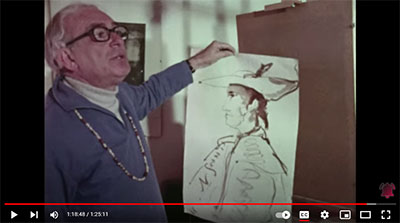
[Elmyr de Hory, Art Forger] Picasso would get for something
like that uh,
$15,000, or $20,000.
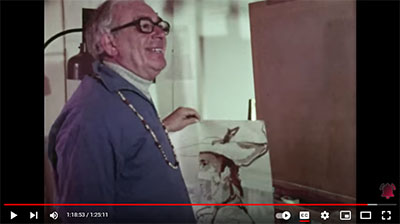
I will sell it for less.
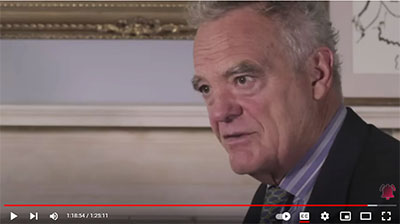
[Richard Compton Miller, Journalist & Friend, London] And in the years to come, he said to me,
when we were walking
down past the Royal Academy,
he said that you'll find an Elmyr
in nearly every major collection
in the world.
And in the years to come, he said to me, when we were walking down past the Royal Academy, he said that you'll find an Elmyr in nearly every major collection in the world. -- Richard Compton Miller, Journalist & Friend, London
[Mariano Llobet, Elmyr's Lawyer & Friend, Ibiza] During the last three years of Elmyr's life,
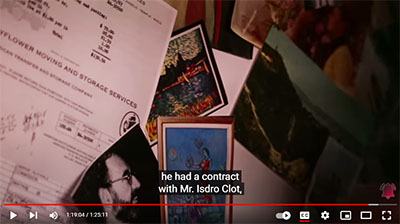
he had a contract with Mr. Isdro Clot, a Spanish Art Dealer,
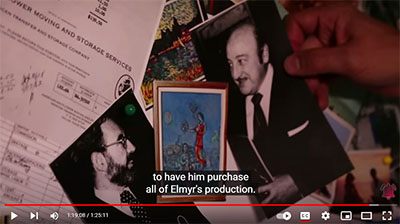
to have him purchase all of Elmyr's production. Clot bought the works just as is, not signed. Not signed as Matisse, nor Modigliani.
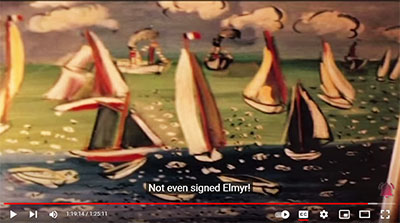
Not even signed Elmyr!
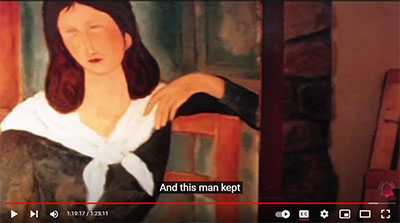
And this man kept
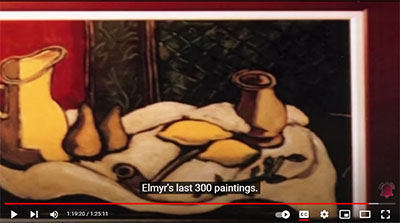
Elmyr's last 300 paintings.
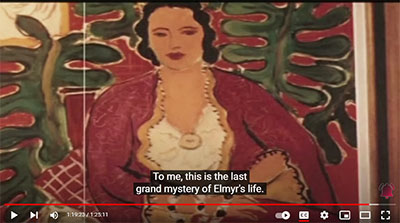
To me, this is the last grand mystery of Elmyr's life.
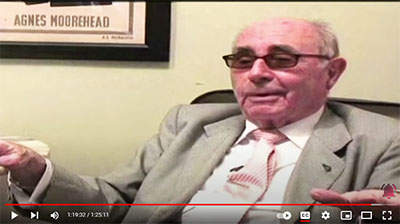
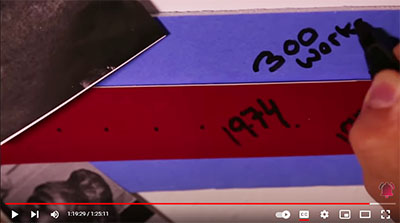
(300 Works)
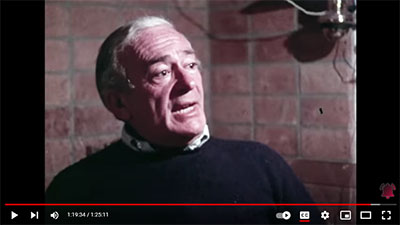
[Elmyr de Hory, Art Forger] I would like to see
that poor Hungarian refugee
who would have resisted
of that temptation.
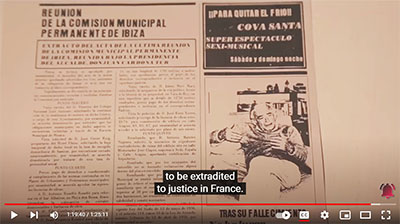
[Michel Braudeau, Journalist/Author, Paris] [Speaking French] He was still being sought by the police in Spain to be extradited to justice in France.
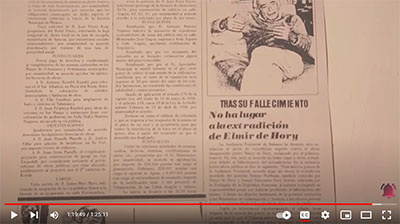
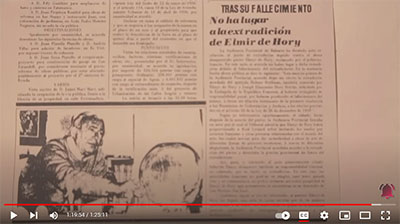
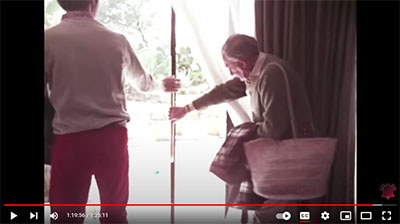
[Roger de Cabrol, Interior Designer & Friend of Elmyr, New York City] All his life he was in flight,
and running away. Not the police,
but he was running away from
the people he was involved with,
like Fernand Legros
and two other art dealers
who were after him.
All his life he was in flight, and running away. Not the police, but he was running away from the people he was involved with, like Fernand Legros and two other art dealers who were after him. -- Roger de Cabrol, Interior Designer & Friend of Elmyr, New York City
[Jeff Oppenheim] Do you know anything about those threats
that he received at least?
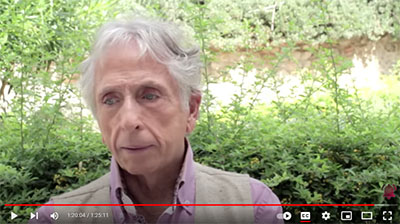
[Carlos Martorell, Author/Publicist, Ibiza] Well, uh...
I remember when they killed his dog.
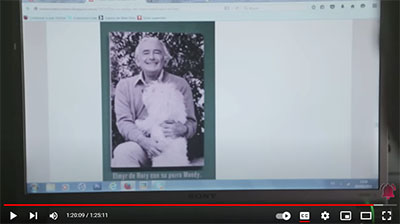
They hung him in a tree.
And I think there was
a paper saying that,
"The next will be you."
I remember when they killed his dog. They hung him in a tree. And I think there was a paper saying that, "The next will be you." -- Carlos Martorell, Author/Publicist, Ibiza

[Mariano Llobet, Elmyr's Lawyer & Friend, Ibiza] [Speaking Spanish] Elmyr had become Legros's enemy.
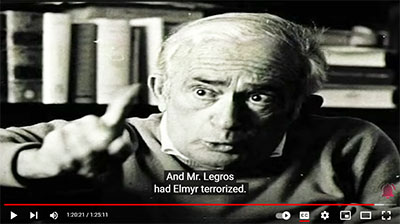
And Mr. Legros had Elmyr terrorized.
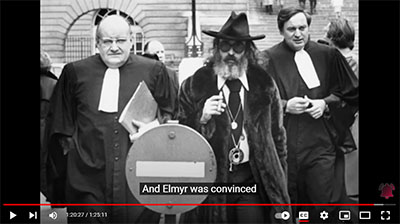
And Elmyr was convinced
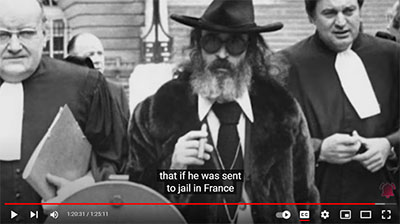
that if he was sent to jail in France,
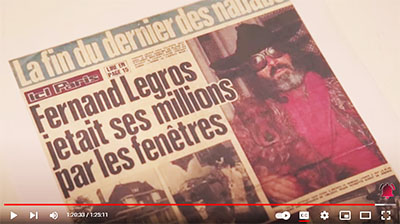
even for just 24 hours,
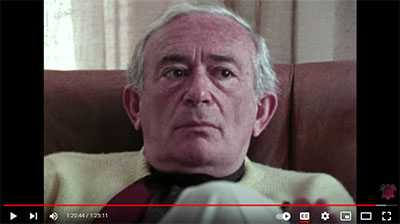
Legros had enough power to have him killed.
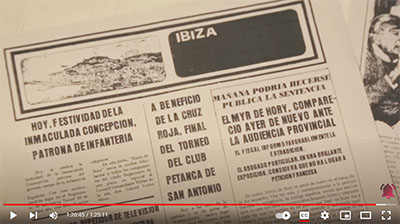
[Roger de Cabrol, Interior Designer & Friend of Elmyr, New York City] I mean, he was like really cornered.
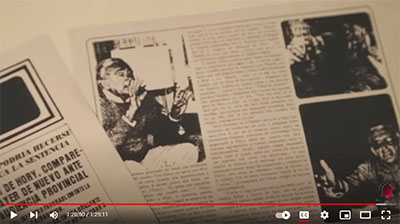
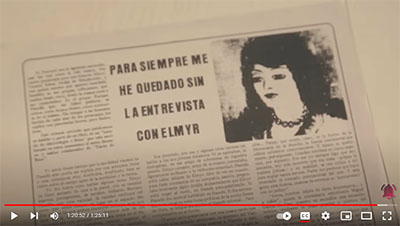
[Carlos Martorell, Author/Publicist, Ibiza] And one day Elmyr
arrived like usual
to the terrace of the Montesol
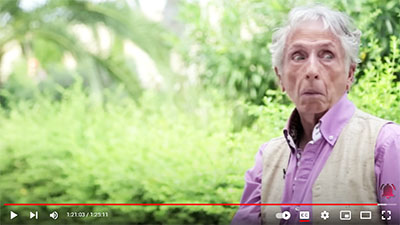
with his hippie bag, and saying [in French: "Good day. Tomorrow I am going to commit suicide."]
We thought he was making a joke.
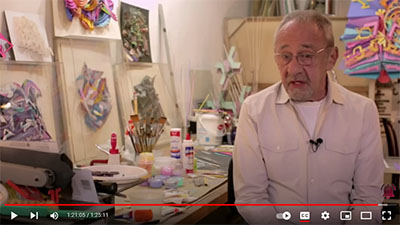
[Lanny Powers, Artist/Curator & Friend of Elmyr, New York City] I had breakfast with him
the day before he died, at the Montesol.
We all knew then that
they were trying to extradite him,
and stand charges again. And he said, "No.
I will never spend another day in jail."
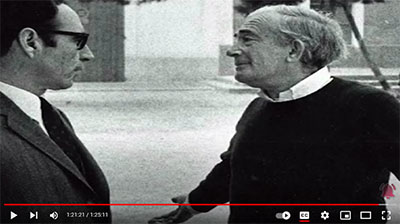
He said, "If I know
they're coming for me,
when they make the decision,
if they're coming for me,
I'll kill myself.
They will not get me."
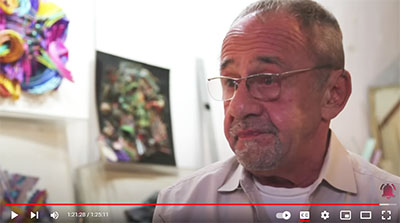
And he did.
I had breakfast with him the day before he died, at the Montesol. We all knew then that they were trying to extradite him, and stand charges again. And he said, "No. I will never spend another day in jail." He said, "If I know they're coming for me, when they make the decision, if they're coming for me, I'll kill myself. They will not get me." And he did. -- Lanny Powers, Artist/Curator & Friend of Elmyr, New York City
Chapter 6: The Drowning
Lake Constance, 8-9 April 1898
On the late afternoon of 8 April 1898 a stout, middle-aged gentleman with a full beard was seen sculling a hired skiff on Lake Constance, which straddles the border between Germany and Switzerland. According to eye-witnesses, he was 'rowing forward and backward for some time on one and the same spot Three days earlier he had walked into a hotel in the lakeside town of Lindau, booked a room but failed to sign himself in. He had spent most of 7 April rowing up and down on Lake Constance and then on the afternoon of 8 April had again resumed his rowing, having left at the reception desk of his hotel a telegram addressed to his wife in Zurich that said nothing more than 'Come tomorrow: He was last seen on the water 'after 7 o'clock in the evening; which at that time of the year meant after dark. On the morning of 9 April the skiff was seen still on the water but overturned, unmanned and with one oar missing. Despite this discovery, two days passed before the hotel manager felt sufficiently concerned by the absence of his guest to contact the police. A search was instituted but without success and, after several days, was called off without a body being found. Indeed, the body never surfaced, which was highly unusual, raising the possibility that it had been weighted down.
Because of the lack of a corpse, his family's confusion over his whereabouts and the understandable caution of the local authorities to commit themselves, it was not until 15 April that it was established that the missing presumed drowned rower was Hofrath Doktor Johann Georg Buhler, Knight of the Prussian Order of the Crown, Comthur of the Order of Franz-Josef, Commander of the Indian Empire, Professor of Indian Philology and Archaeology at the University of Vienna. Letters written to T. W. Rhys Davids in February show that Buhler was with his Swiss wife and their sixteen-year-old son in Zurich until he returned to Vienna on 26 February. According to Buhler, the Austrian Government had decreed an unusually early Easter vacation that year, which meant that his teaching duties at the university were to resume on 21 March and would continue over the Easter weekend itself, beginning on Good Friday 8 April. Yet it appears that, without a word to his wife or to anyone else, the Professor had abandoned his academic duties on 5 April to return to his family in Zurich — except that, unaccountably, he had stopped off at Lake Constance to go rowing.
The manner of Buhler's death at the age of sixty-one shocked philologists and historians through Europe and Asia. On the 8th of April last,' wrote his close friend the Sanskritist Professor Max Muller, in the Journal of the Royal Asiatic Society —while enjoying alone in a small boat a beautiful evening on the Lake of Constance, he seems to have lost an oar, and in trying to recover it, to have overbalanced himself. As we think of the cold waves closing over our dear friend, we feel stunned and speechless before so great and cruel a calamity ... He who for so many years was the very life of Sanskrit scholarship, who helped us, guided us, corrected us, in our different researches, is gone.
That was the line taken by friends and colleagues alike. In India the Indian Antiquary printed no less than twelve extended obituaries or appreciations by his peers of the scholar acknowledged by one and all to have been the greatest among them. Several went into unusual detail on the circumstances leading up to the great man's tragic demise. 'Boating was Buhler's favourite sport, and he often liked to practice it, particularly after hard work,' wrote one of these obituarists, the historian Professor Werner Kaegi of Basle:On Good Friday the 8th he was induced by the beautiful spring weather to stay one day longer, 'in order to make a longer excursion,' as he was heard saying. He started in the afternoon in one of those long and narrow boats, the oars of which lie so lightly on the outriggers, that they are lifted even at a great distance by the wash of a steamer, if they are not held tightly as soon as the waves approach. ... In the opinion of experienced people living near the lake it is highly probable that he lost one oar, which he tried to secure again, and in trying to catch it he, being a stout man, fell overboard. By this natural and simple hypothesis the terrible accident becomes perfectly plain and intelligible.
Prof. Kaegi had added this detailed explanation to his obituary because, as he explained, of newspaper reports of 'rumours circulating in Vienna as to a voluntary or violent death of Hofrath Buhler.' He went on to insist that he and the late Professor's friends 'deny most positively the very possibility of a suicide committed by Buhler for ethical or philosophical motives.'
Yet there were features of Buhler's behaviour that were hard to explain away, particularly his entirely uncharacteristic behaviour in not communicating with his wife. This his friend C. H. Tawney surmised was because 'Professor Buhler had evidently intended to surprise his family in Zurich with his visit, and had therefore given no hint of his movements, [as a result of which] they continued to correspond with him at his address in Vienna and were much distressed at receiving no answer: It was also suggested that even the greatest of scholars might have had weaknesses that left them vulnerable to outside pressures. 'Buhler was free of all touchiness in questions of scholarship,' declared Prof. Friedrich Knauer of Kiew University, while adding that 'even men of the greatness of a Buhler are not always proof against "gnatbites'". The newly-elected Boden Professor of Sanskrit Arthur MacDonnell took much the same line, referring to Baler's 'high-mindedness' which 'always deterred him from doing or saying anything against those to whom he felt he owed a debt of gratitude; while also hinting at a degree of touchiness about his professional reputation: 'Had he ever been unjustifiably attacked, his aggressor would probably have had cause to repent his temerity. For Buhler, as he told me himself, kept a record of the blunders which he found in the labours of other scholars, and which he might have felt compelled to refer to in self-defence.'
Despite the defensive operation mounted by friends and colleagues the circumstantial evidence was compelling, suggesting this apparently strong and healthy man, still at sixty-one very much in possession of his faculties, had indeed taken his own life. If it was a suicide, the reasons why will never be known for certain. But some would claim that a combination of revelations concerning his former student and long-time collaborator in India lay at the heart of it; and that these revelations led the unfortunate Prof. Buhler to believe that the Piprahwa inscription, about which he had written so recently and so confidently, was nothing more than another fraud perpetrated by Fuhrer — one with which his own name would be inextricably linked. If so, he was not to know that the chronology of events made such a forgery impossible.
It took some weeks for the news of Buhler's disappearance and presumed drowning to filter through to India. Anton Fuhrer's response is unrecorded and can only be imagined.
To what degree the death of the world's pre-eminent Sanskritist affected the enquiry into Dr. Fuhrer's dealings with U Ma is equally a matter for conjecture. But it is odd that what might be called the Fuhrer scandal failed to break and that its author appeared to suffer no consequences. This may be attributed to the Government of NWP&O's determination to prevent the affair from becoming public knowledge and so cast a stain on one of its departments. Whatever was said on the subject was kept off the record and, as far as possible, out of the files, and initially, at least, the Archaeological Surveyor to the Government of NWP&O held on to his job.
However, on 8 August, four months after Buhler's death, Charles Odling, CSI, Secretary and Chief Engineer to Govt., NWP&O, PWD, received the first of 500 printed copies of Dr. Fuhrer's long-delayed Antiquities of Buddha Sakyamuni's Birth-Place in the Nepalese Tarai. He was perturbed to discover that it had been printed without being submitted to his own office for approval. This did not prevent him from authorising a week later Fuhrer's costings for a new publication: 500 copies of what was evidently intended to be an extremely lavish report on the Archaeological Surveyor's excavations of Kapilavastu — the printing to be done at the Government Presses in Allahabad, the twenty line drawings prepared at the Survey of India Offices at Dehra Dun and the fourteen coloured plates prepared by Messrs. Griggs and Sons in London, this last at a cost of £75. Odling's only proviso was that Fuhrer's proofs for this second publication must be submitted to him before printing.
Copies of Fuhrer's Antiquities now began to circulate through a number of NWP&O Government departments, with one copy landing on the desk of the Lieutenant-Governor. What Sir Antony MacDonnell's first thoughts were on reading the book are not known but his response was to ask his acting Chief Secretary, Vincent Smith, to carry out a thorough enquiry into Dr. Fuhrer's activities that extended far beyond his Buddhist relic forgeries. Within weeks this enquiry reached its inevitable conclusion in a face-to-face confrontation between Smith and Fuhrer in the exhibition hall of the Lucknow Museum.
'I went to Lucknow in September 1898, by order of government,' wrote Smith afterwards, 'to enquire into Dr. Fuhrer's proceedings, and convict him of systematic falsification of his correspondence with several Governments: One of the first questions Smith put to Fuhrer was why a drawing on display in front of them, showing the base of the damaged stupa he had excavated at Sagarwa, bore the label `Stupa of Mahanaman':I asked Dr. Fuhrer his authority for this label, and he answered with some confusion that he found a brick with the word Maha on it which he interpreted as Mahanaman. He added that the brick crumbled to pieces. The story about the brick being manifestly false, I told Dr. Fuhrer so, and drew my pencil across the label. He did not make a protest, or say a word about the alleged inscription on the casket lid [found in the same stupa]. No photograph or facsimile of that inscription exists, and it is perfectly clear that no such inscription exists. In his correspondence with the Burmese priest Uma [U Ma], Dr. Fuhrer committed an exactly similar forgery by sending Uma a document purporting to be a copy of an inscription on a casket, and reading, 'Relics of Upagupta.' I charged Dr. Fuhrer to his face with that forgery and he did not deny it.
Dr. Fuhrer now took the only course of action still open to him: he resigned on the spot before he could be sacked. It was a resignation that the Government of the N WP&O was only too happy to accept.
However, there still remained the urgent questions of what was to be done with Dr. Fuhrer's two Nepal reports — the one newly published and the other about to be printed — and who was to take over the Archaeological Surveyor's work. It was decided at the highest level that all copies of Fuhrer's Antiquities of Buddha Sakyamuni's Birth-Place should be withdrawn with all speed and destroyed, and that the publication of Fuhrer's Kapilavastu report should be abandoned. The Province's Architectural Surveyor, Edmund Smith, was made acting Archaeological Surveyor and officiating Curator of the Lucknow Museum.
-- The Buddha and Dr. Fuhrer: An Archaeological Scandal, by Charles Allen
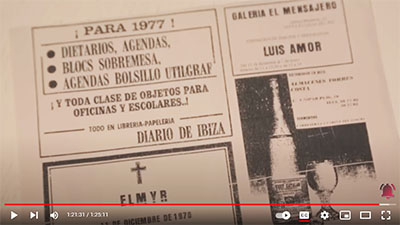
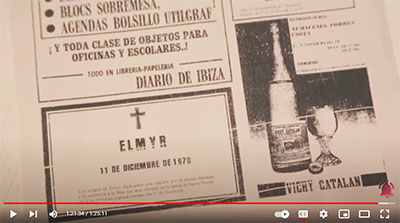
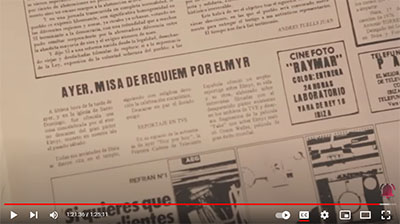
[NEWSPAPER OBITUARY: ELMYR: 11 DE DICIEMBRE DE 1978: AYER, MISA DE REQUIEM POR ELMYR (DECEMBER 11, 1978 YESTERDAY, REQUIEM MASS BY ELMYR]
[Roger de Cabrol, Interior Designer & Friend of Elmyr, New York City] I think after many years of running
away from the law, and the lawyers,
and people who wanted to hurt him,
I think he had just a moment of panic.
And I just...
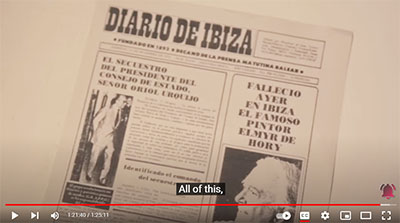
[NEWSPAPER OBITUARY: FALLECIO AYER EN IBIZA EL FAMOSPINTOR ELMYR DE HORY (DIED YESTERDAY IN IBIZA THE FAMOUS ELMYR DE HORY]
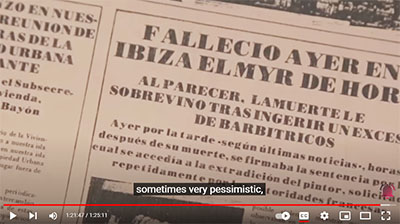
[NEWSPAPER OBITUARY: AL PARECER, LAMUERTELE SOBREVINO TRAS INGER UN EXCESS DE BARBITRICOS (APPARENTLY, DEATH OCCURRED AFTER INGESTING AN EXCESS OF BARBITRICOS)]
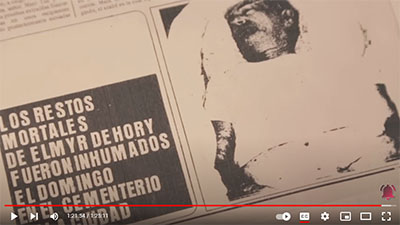
[NEWSPAPER OBITUARY: LOS RESTOSMORTALES DE ELMYR DE HORY FUERON INHUMAOS EL DOMING EN EL CEMENTERIOR CIUDAD (THE REMAINS OF ELMYR DE HORY WERE BURIED ON DOMING IN THE CITY CEMETERY)]
[Mariano Llobet, Elmyr's Lawyer & Friend, Ibiza] [Speaking Spanish] All of this, coupled with Elmyr's depressive nature,

sometimes being very optimistic, sometimes very pessimistic,
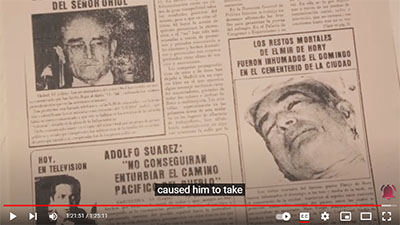
caused him to take the fatal combination that killed him.
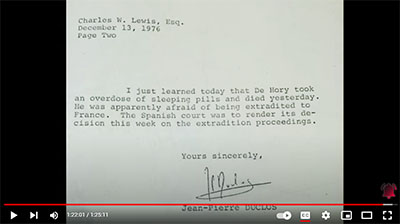
Charles W. Lewis, Esq.
December 13, 1976
Page Two
I just learned today that De Hory took an overdose of sleeping pills and died yesterday. He was apparently afraid of being extradited to France. The Spanish court was to render its decision this week on the extradition proceedings.
Yours sincerely,
Jean-Pierre Duclos
[Roger de Cabrol, Interior Designer & Friend of Elmyr, New York City] It's a shame because,
I mean, he was not going to be
jailed or extradited.
It's a shame because, I mean, he was not going to be jailed or extradited. -- Roger de Cabrol, Interior Designer & Friend of Elmyr, New York City
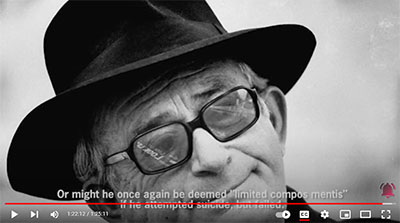
Or might he once again be deemed "limited compos mentis" if he attempted suicide, but failed.
[Carlos Martorell, Author/Publicist, Ibiza] Or, even some people say,
Elmyr did not die, and he escaped.
The rumor is he was trying
not to go to jail,
and pretend a suicide.
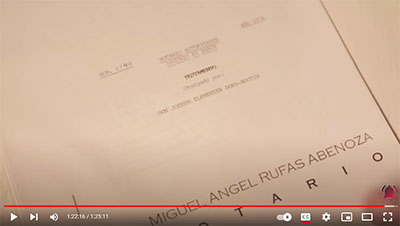
[NOTARIO AUTORIZANTE GINIO PI BANUS TESTAMENTO OTORGADO POR: DON JOSEPH ELEMENTER DORY-BOUTIN (NOTARY LICENSEUR GINIO PI BANUS WILL GRANTED BY: MR JOSEPH ELEMENTER DORY-BOUTIN) (Don Joseph Elementer Dory-Boutin, Death Certificate & Last Will. Lists age of death incorrectly as 65 years.)]
And then the ambulance will arrive,
then he will be okay.

[Mariano Llobet, Elmyr's Lawyer & Friend, Ibiza] I had him buried in one of our family plots.
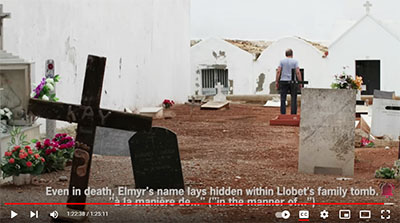
[Even in death, Elmyr's name lays hidden within Llobet's family tomb. "A la maniere de ..." ("in the manner of...")
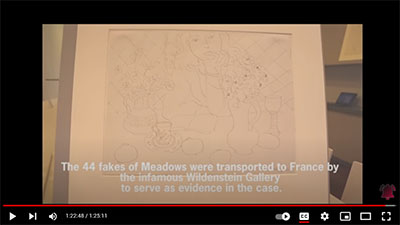
[The 44 fakes of Meadows were transported to France by the infamous Wildenstein Gallery to serve as evidence in the case.]
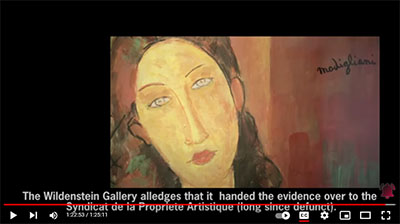
[The Wildenstein Gallery alleges that it handed the evidence over to the Syndicat de la Propriete Artistique (long since defunct).
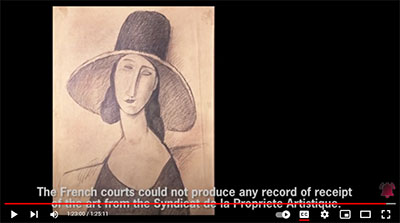
[The French courts could not produce any record of receipt of the art from the Syndicat de la Propriete Artistique.]
The 44 fakes of Meadows were transported to France by the infamous Wildenstein Gallery to serve as evidence in the case. The Wildenstein Gallery alleges that it handed the evidence over to the Syndicat de la Propriete Artistique (long since defunct). The French courts could not produce any record of receipt of the art from the Syndicat de la Propriete Artistique.
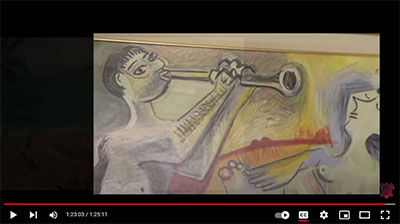
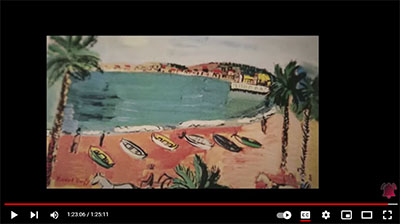
[Jean-Pierre Duclos, Attorney for Mr. Meadows, Paris] They have to be somewhere.
Normally, the 44 works that
were fake should have been destroyed.
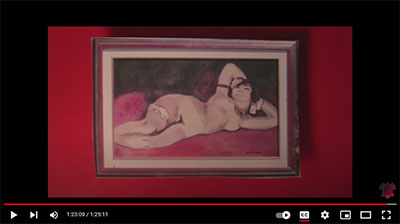
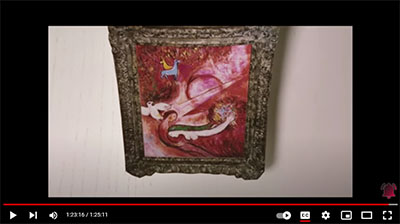
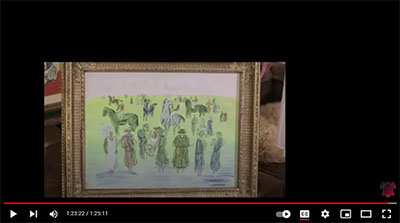
[Sabine Cordesse, Attorney, Paris] This means that there are a few fakes
on the market.
That's incredible.
Incredible.
This means that there are a few fakes on the market. That's incredible. Incredible. -- Sabine Cordesse, Attorney, Paris
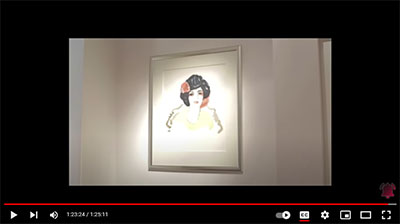
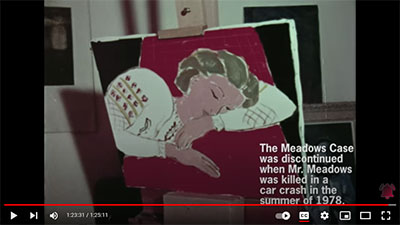
[The Meadows Case was discontinued when Mr. Meadows was killed in a car crash in the summer of 1978.]
[William Charron, Esq., Partner, Pryor Cashman LLP, New York City] I don't think Elmyr gets
any great pass just by saying,
"You know, what I did was really good,
and therefore it's beautiful, so it's art."
If he really believed that,
he could have signed everything "de Hory."
I don't think Elmyr gets any great pass just by saying, "You know, what I did was really good, and therefore it's beautiful, so it's art." If he really believed that, he could have signed everything "de Hory." -- William Charron, Esq., Partner, Pryor Cashman LLP, New York City
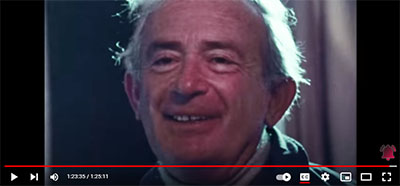
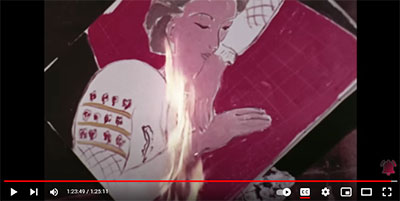
[Elmyr de Hory, Art Forger] I feel that you should burn it.
We burn everything,
but myself.
[Jeff Oppenheim] It's been said that beauty is truth,
and truth beauty.
But doesn't Elmyr's work blur that line?
His works were his own creation,
executed brilliantly "in the style of."
At the very least,
doesn't his life demonstrate
him to be undeniably a true original?
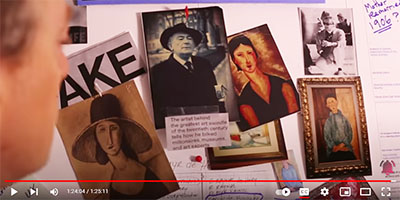
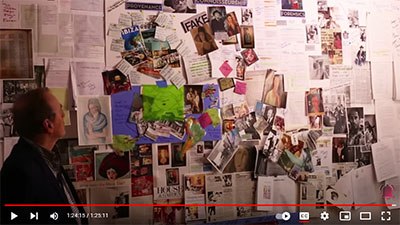
But perhaps what is most troubling
is that we are left to judge,
exercising our own moral compass,
empowering our own aesthetic,
to offer opinion on beauty,
truth, value.
We may never know how many works he created
during his career,
nor how deeply they have penetrated
galleries, museums, private collections.
And we have no way of truly anticipating
his continued impact on the art market.
But one thing is certain,
Elmyr de Hory will forever
influence how we look upon art.
And in that, he has ensured
himself a page in art history
as an accomplished, celebrated real fake.
- ♪ What you think now? ♪
- ♪ I think I love you ♪
♪ What you feel now? ♪
♪ I feel I need you ♪
♪ What you know ♪
♪ To be real? ♪
♪ Ooh ♪
♪ Your love's for real now ♪
♪ You know, it's your love and my love ♪
♪ My love and your love ♪
♪ Our love is here to stay ♪
♪ What you think now? ♪
♪ I think I love you ♪
♪ What you feel now? ♪
♪ I feel I need you ♪
♪ What you know ♪
♪ To be real? ♪
♪ Ooh ♪
♪ Your love is for real now ♪
♪ You know, it's your love and my love ♪
♪ And my love is your love ♪
♪ Our love is here to stay ♪
♪ What you think now? ♪
♪ I think I love you ♪
♪ What you feel now? ♪
♪ I feel I need you ♪
♪ What you know ♪
♪ To be real? ♪
♪ What you think now? ♪
♪ I think I love you now ♪
♪ What you feel now? ♪
♪ I feel I need you ♪
♪ What you know ♪
♪ To be real? ♪
♪ It's gotta be real ♪
♪ To be real ♪
♪ It's gotta be real ♪
♪ To be real ♪
